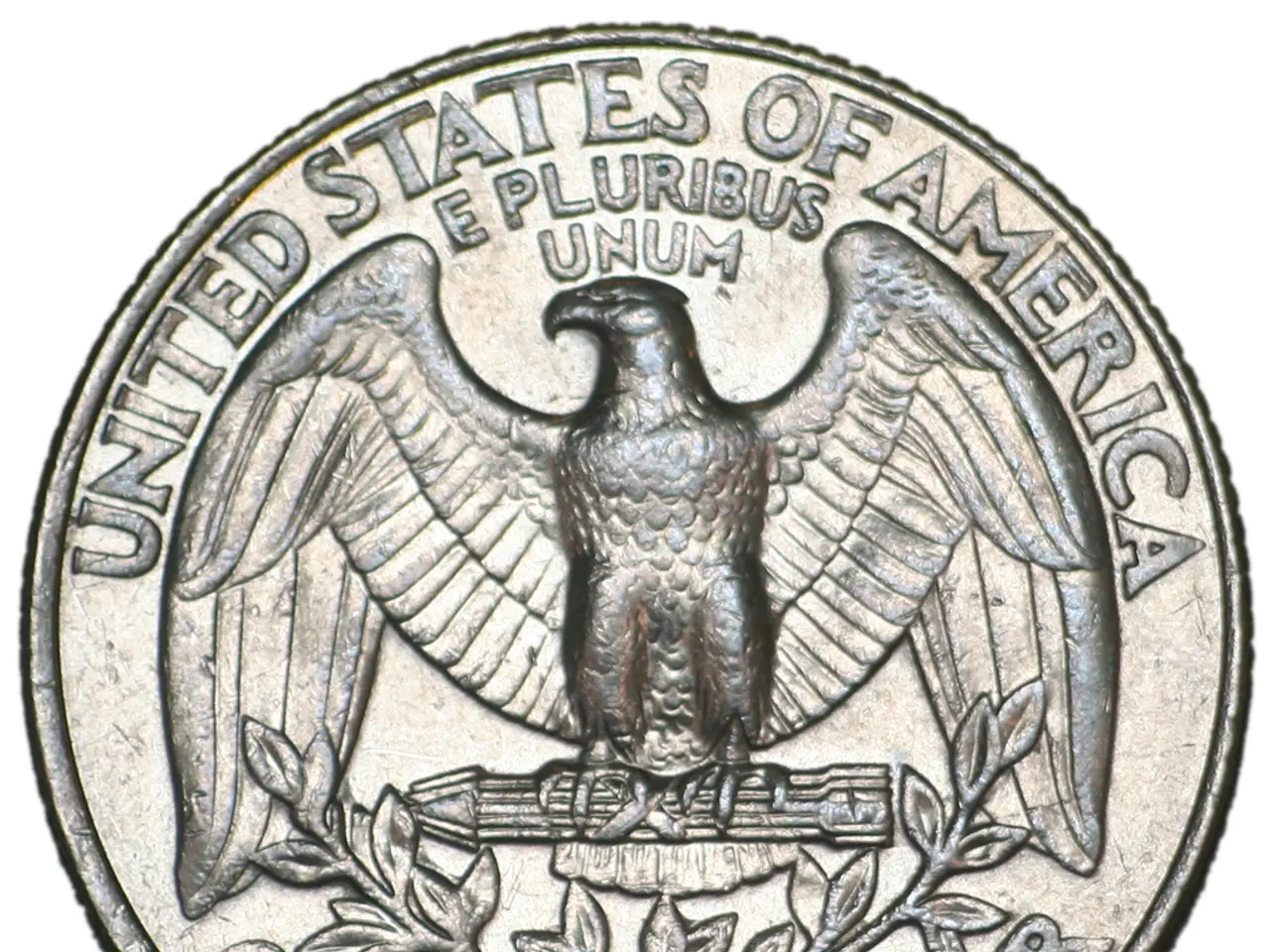Fixed Income Yield by ARDC Stands at 9%
Diving into High-Yield Debt with ARDC: The Ares Dynamic Credit Allocation Fund
Looking to boost your income portfolio? Consider the Ares Dynamic Credit Allocation Fund (ARDC), a closed-end fund that specializes in high-yield debt assets.
Fund Overview
ARDC's mission is to deliver an attractive total return, primarily through steady income and secondary via capital appreciation. The fund invests primarily in a flexible, diversified portfolio consisting of:
- Below-investment-grade senior loans
- High-yield corporate bonds
- Fixed-income instruments similar in nature
- Securities of collateralized loan obligations (CLOs)
ARDC is part of the Ares Credit Group, managing an impressive $36.59 billion in assets as of March 31, 2025.
Like many closed-end funds, ARDC provides regular monthly distributions. Its expense ratio stands at 5.58%, with 3.04% attributable to interest charges - ARDC uses leverage, which has decreased from 39.43% as of August 31, 2024, to 37.94% as of May 31, 2025.
The fund boasts 303 holdings and $556 million in net assets, with an average daily trading volume of 99,000 shares.
Portfolio Analysis
ARDC's average position size is 0.33% of the portfolio. Its CLO holdings yield the highest weighted average, at 10.43%, followed by senior loans at 7.21% and bonds at 6.66%.
Senior loans account for 40% of the portfolio, with bonds making up 34%, CLO debt at 16%, and CLO equity at approximately 13%. ARDC primarily invests in below-investment-grade debt.
As of May 31, 2025, BB3 debt remained ARDC's largest allocation, at 21.6%, but significantly lower than 29.6% as of August 31, 2024. BB3, B1, and B2-rated debt comprised 51% of the portfolio, down from 59% as of August 31, 2024. Non-rated holdings increased to 13.6%, up from 10.9% on August 31, 2024.
ARDC's top 10 holdings accounted for ~9.3% of the portfolio as of May 31, 2025, with ATRM 14, a CLO, being the top allocation, at 1.17%. The remaining nine holdings, including debt from Ford, Sprint, Lumen (the regional telecom with a lengthy, ongoing turnaround saga), and energy companies TransMontaigne and Williams Companies, comprised less than 1% each.
Dividends
ARDC's monthly distribution rate is $0.1125, reduced from $0.1175 to $0.1125 in February 2025. At its June 27, 2025, intraday price of $14.21, ARDC's yield comes to 9.50%. It has a modest five-year dividend growth rate of 2%, experiencing a 13% increase in 2023 and another 4% increase in 2024.
Net investment income (NII) fell by 9% in 2024, while net realized losses declined from $17.92 million to $7.95 million. Net unrealized gains fell from $39.78 million to $14.53 million in 2024.
NII covered approximately 97% of 2024 distributions, compared to 1.11X in 2023, with net assets increasing by $14.9 million, to $347 million.
Performance
ARDC has lagged behind the debt closed-end fund industry and the S&P 500 on a price basis over the past year, as well as in 2025. Its total return of 7.27% slightly surpasses the industry's 7.04% return and lags the S&P's 14% total return.
Looking back at its historical performance, ARDC has typically traded at premium valuations over the past three and five-year periods, outperforming its net asset value (NAV) returns. It has a slightly higher market price return of 6.07%, compared to its NAV return of 5.84% since inception.
ARDC outperformed the Morningstar Debt CEF category on a price and NAV basis in 2023-2024, 2019-2021, and 2017.
Risks
ARDC faces risks due to interest rates, credit, leverage, and several other factors:
- Interest Rate Risk: An increase in interest rates would put pressure on ARDC's price and portfolio value, much like what occurred in 2022 when its market price fell by approximately 22%.
- Credit Risk: If a borrower defaults on payments or experiences difficulties in meeting them, it may result in lower ratings within ARDC's portfolio from rating agencies.
- Leverage Risk: While leverage can amplify gains during upswings, it can magnify losses during market downturns.
- Distribution Sustainability: Though the yield is high, dividends are discretionary and can be funded partly by return of capital (ROC) rather than solely from income, leading to unsustainable payouts in the long term without replenishing capital.
- Market Discount to NAV: Trading at a discount may reflect investor wariness about future income generation and risk exposure.
Valuations
Investing in closed-end funds at a deeper-than-average discount to their historical averages can be advantageous due to mean reversion. CEFs' daily NAV-per-share valuations are calculated after market closure.
As of June 26, 2025, ARDC's discount of 2.54% was deeper than its one-year average premium of 0.69%, but not as deep as its three- and five-year average discounts of 5.92% and 6.92%, respectively.
Final Thoughts
We rate ARDC a Hold, suggesting waiting for a deeper-than-average discount before purchasing new shares. Such an opportunity could potentially arise during market downturns.
Our service, Hidden Dividend Stocks Plus, focuses on undercover, undervalued income vehicles, along with special high-yield situations. We scour the US and international markets for solid income opportunities with dividend yields ranging from 6% to 10%-plus, backed by strong earnings.
We publish weekly articles with investing ideas exclusive to the HDS+ site that you won't find anywhere else. We recently closed a position with a 47% total return from inception.
Investing in the Ares Dynamic Credit Allocation Fund (ARDC) could be a part of one's personal-finance strategy, as it aims to deliver an attractive total return, focusing primarily on steady income and secondarily on capital appreciation. This closed-end funding utilizes finance strategies by primarily investing in below-investment-grade senior loans, high-yield corporate bonds, fixed-income instruments, and securities of collateralized loan obligations (CLOs).







